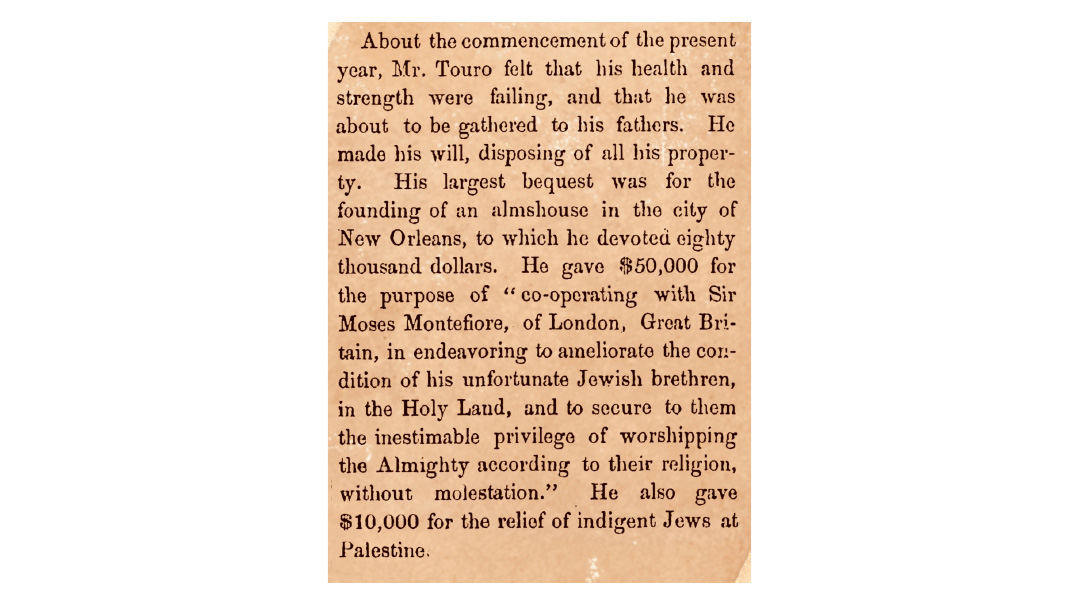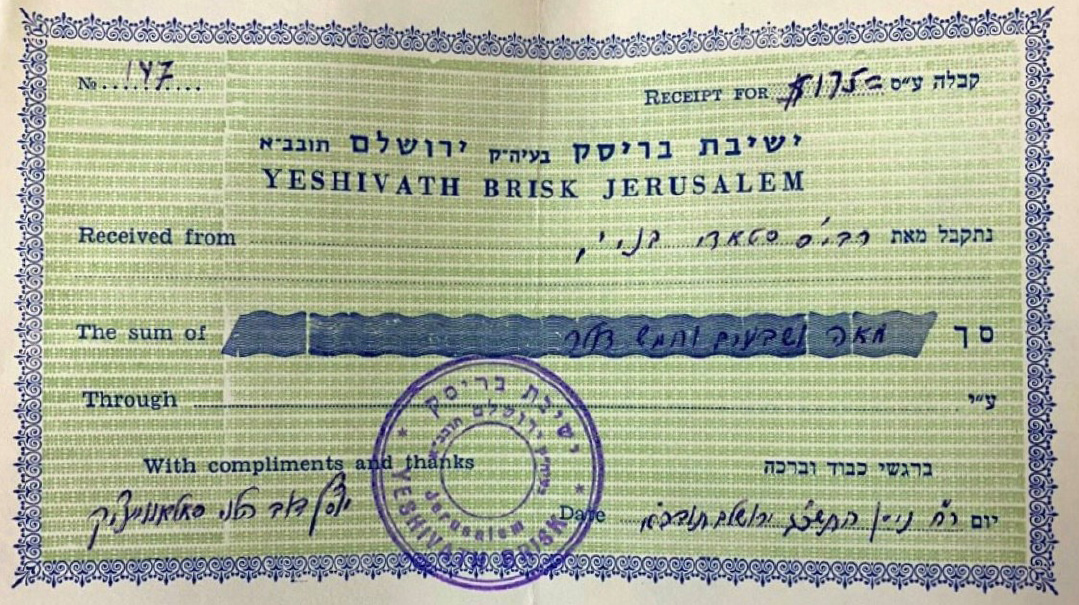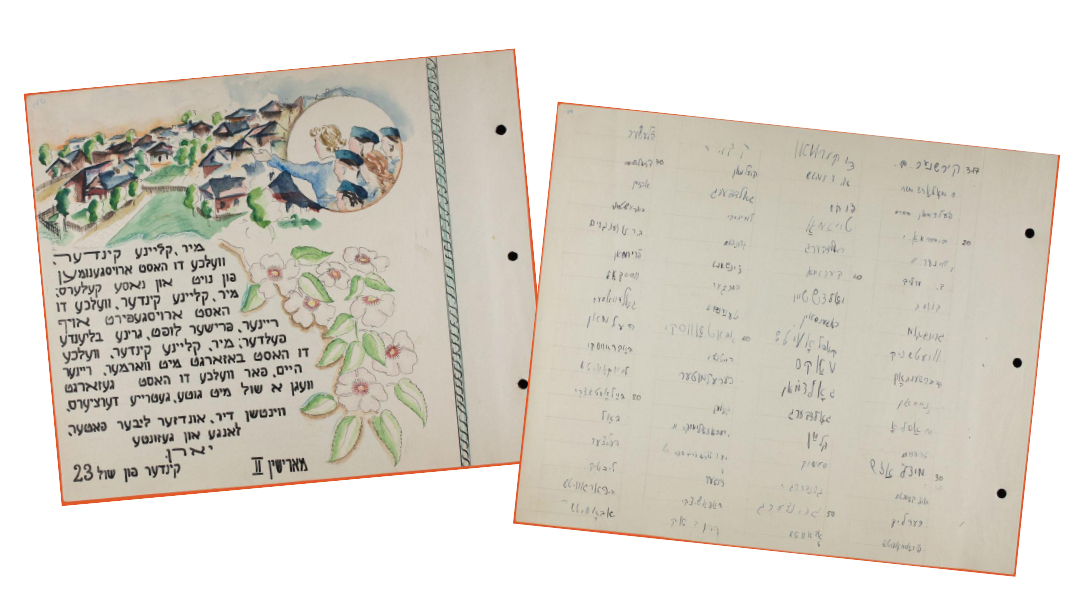Mossad’s Mashal Misstep
| August 6, 2024Targeted killings are as old as the Bible

Title: Mossad’s Mashal Misstep
Location: Amman, Jordan
Document: The Globe and Mail
Time: September 26, 1997
IN days of old, targeted killings of the Jewish People’s archenemies either prevented or avenged bloodshed. The hanging of Haman, as recounted in Megillas Esther, averted a genocide, and the Gemara in Gittin recounts the story of a mosquito causing the death of the Roman emperor Titus after he destroyed the second Beis Hamikdash.
During the Middle Ages, constant danger to the Jewish community emerged from within in the form of mosrim, informers. These turncoats often posed existential threats to entire Jewish communities by making slanderous reports to anti-Semitic government officials, who were only too eager to act upon such calumny. That being the case, rabbinical authorities often declared that an informer had the status of a rodef, and a targeted killing of the informer was carried out to save the community from destruction.
The Ri Migash arranged the killing of one such moser in the 12th century, while the Rambam testified that the practice was common in many places where the threat of mosrim existed. In the 13th and 14th centuries, Rabbeinu Yonah of Giron, the Rashba, and the Rosh all related stories of their direct involvement in the execution of mosrim, which saved Jewish communities from certain catastrophe.
Almost since its inception, the State of Israel has responded to threats posed by leading terrorists with targeted killings, saving or avenging numerous Jewish lives. Perhaps the most famous of these operations was undertaken by the Mossad following the murder of 11 Israeli athletes during the 1972 Munich Olympics. Over the next 16 years, Mossad operatives, working in countries around the world, assassinated terrorists and leaders of the Black September organization, as well as key members of the PLO, in retaliation for the Munich massacre. Those actions crippled the Black September organization and severely curtailed terrorist activities against Israelis abroad.
Operation Spring of Youth was a spectacular sub-operation within this context. On the night of April 9–10, 1973, elite commando units of the Israeli Navy and Army, together with Mossad operatives, infiltrated Beirut, Lebanon from the sea. Several leading terrorists of both the PLO and Black September were killed in the daring operation.
A dramatic episode occurred in 1997 following a spate of bloody attacks by Hamas on Israeli civilians, including a twin suicide bombing at Jerusalem’s Machaneh Yehudah market that killed 16. The Israeli government decided to strike back by assassinating Khaled Mashal, a senior Hamas leader, in Amman, Jordan. This attempted operation would have far-reaching consequences.
On September 25, 1997, two Mossad agents posing as Canadian tourists approached Mashal on an Amman street. One of them put a device next to the Hamas leader’s ear and sprayed him with a potent toxin, aiming for a subtle, untraceable, “silent kill.” However, the operation went awry when a Hamas operative spotted the pair getting into their getaway car and chased them down. They were subsequently arrested by Jordanian authorities, while four Mossad agents from the support team fled to the Israeli embassy, creating a nightmarish diplomatic crisis.
At the same time, Mashal was rushed to an Amman hospital in critical condition. King Hussein of Jordan was livid and threatened to pull out of the peace agreement signed with Israel only a couple of years prior. A Jordanian special forces team stood ready to storm the Israeli embassy.
The only way out of this diplomatic crisis and bungled hit was to provide an antidote to the poison, which had been carried by the hit team as a safeguard against accidental exposure. The antidote was duly delivered to royal physician Dr. Sami Rababa, who swiftly administered it, saving the terrorist Mashal’s life. The debacle wasn’t over, and six Mossad agents were blocked from exiting the Israeli embassy in Amman. To secure their release (and King Hussein’s good will), Israel was forced to free several Palestinian prisoners, including Hamas founder Sheikh Ahmed Yassin — a major boost to Hamas’s morale and popularity. (Israel later killed Yassin in a 2004 Gaza airstrike.)
The botched operation was a major embarrassment for the Mossad and Israeli government. It strained Israel’s relationship with Jordan as well as with Canada, whose passports had been used in the operation without permission. Surviving the attempt elevated Khaled Mashal’s status in Hamas. He went on to lead its political bureau for 21 years until 2017.
Although this particular assassination was ultimately unsuccessful, many other murderers of the Jewish People were prevented from carrying out their nefarious plans, instead suffering sudden and dramatic endings to their lives in daring operations carried out by Israeli special forces. As Devorah Haneviah proclaimed after the successful victory over the army of Sisera: Kein yovdu kol oyevecha Hashem — So may all your enemies perish, Hashem.
Operation Vengeance
The pioneering modern-day targeted killing was the assassination of Japan’s Admiral Isoroku Yamamoto on April 18, 1943. Because he was the mastermind of the Pearl Harbor attack and the brilliant commander of the Imperial Japanese Navy, the US Naval command figured that an assassination of Yamamoto would hurt Japanese morale, and since he was essentially irreplaceable, it would adversely impact Japanese naval capabilities in the Pacific theater.
American intelligence had deciphered Yamamoto’s flight plan, and was able to pinpoint his plane’s location at any given time. The assassination may have been authorized by President Roosevelt himself, who allegedly said to “get Yamamoto,” or it may have been the sole decision of Admiral Chester Nimitz. Either way, a squadron of P-38 fighter planes took off from Guadalcanal and successfully downed Yamamoto’s plane over Bougainville Island. This successful assassination has served as the paradigm for subsequent military-related targeted killings until today.
Revenge on Murderers
In 1926, Sholem Schwarzbard assassinated the Ukrainian nationalist Symon Petliura in Paris in revenge for the latter’s role in the murder of tens of thousands of Ukrainian Jews in the infamous pogroms of 1919. During Schwarzbard’s trial, a Red Cross representative testified on behalf of the prosecution, claiming that Petliura was not responsible for murdering Ukrainian Jews.
During the Holocaust, there were unfortunately instances of Jewish collaboration with the Nazis, and sometimes Jews killed these collaborators, sometimes preemptively and sometimes in revenge immediate following the war.
For more details about this episode, and many others, see Ronen Bergman’s “Rise and Kill First: The Secret History of Israel's Targeted Assassinations”
(Originally featured in Mishpacha, Issue 1023)
Oops! We could not locate your form.






